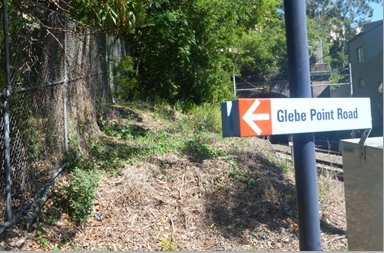The Subcommittee was featured in articles in two editions of the Inner West Courier (15 and 19 September 2013) concerning the City’s draft Urban Ecology Strategic Action Plan, including the following: ‘The Glebe Society’s Blue Wren Group was consulted on the plan and member Norma Hawkins said the volunteer group had been working on Arthur (Paddy) Grey Reserve in Glebe to restore the habitat for the endangered superb fairy wren birds.”I’m passionate because of the beauty of the birds and what they give to you in everyday life. I want everyone to have that experience and for them to be kept and saved from predators,” she said. “The habitat is the way we will be able to have them with us”.’
A dozen volunteers attended the working bee held by the Orphan School Creek Bushcare Group on Sunday 22September 2013 and the next weeding day was organised for the morning of Sunday 20 October. The Glebe Bushcare Group continues to meet on a weekly basis each Wednesday and is currently watering new native plantings in Federal Park opposite the Rozelle Bay Nursery in Chapman Rd. Following the planting day in Paddy Gray Reserve on 11 September, the Subcommittee purchased 90m of hose and local residents have established a roster so that the newly planted native seedling are watered every couple of days. So far their efforts have been successful and the seedlings are thriving.
On Wednesday 9 October, following an invitation to all members of the Society and adjacent residents (by letterboxing), an onsite meeting was held in Sarah Pennington Reserve and Palmerston Avenue Park. It was attended by seven locals and Rae Broadfoot, the Community Gardens and Volunteer Coordinator for the City of Sydney. A representative from Transdev Sydney, the operators of the light rail system, had also accepted an invitation to attend but could not come because of the need to solve problems related to the derailment of some of the company’s trams; Transdev Sydney is a subsidiary of a privately owned, French-based, public transport company.
Future native plantings to enhance biodiversity were discussed as were the continued, progressive removal of non-native species (poplars and oleanders) and the possibility of diverting storm water from Lombard St to provide additional water to newly planted flora. Rae Broadfoot will develop an action and work plan for the Reserve and Park which will be available for comment by local residents with the aim of holding a community planting day in autumn next year. We also inspected the land adjacent to the Glebe Light Rail Stop which is under Transdev Sydney’s custodianship. There are a couple of major problems that need to be solved at this site:
- the land is infested with weeds including large Celtis sinensis trees (Chinese Hackberry – a native tree of China, Korea and Japan) which are a declared noxious weed species.
- the wall of a strata development adjacent to the Stop is covered with graffiti and local residents are keen to grow an evergreen creeper over the wall so that it can no longer be defaced.

The City has called for tenders for the upgrading of St James Park with work to commence over the Christmas holiday period; all planning approvals are complete. In John St Reserve the flood study is in progress and structural assessments of the retaining wall behind the Hegarty St houses are underway. An ecological study of the Reserve has been completed with the aim of maximising biodiversity habitat but still retaining open space for use by local residents. A development application for remedial works has been written (the first 30-40cm of the surface soil is contaminated, and will be removed and replaced with clean topsoil). Work on upgrading the Reserve will commence in mid-2014. As reported last month the City recently used a chemical spray to kill clover species in the Reserve and St James Park. The local residents are in discussion with the City to find out the full details and, because of the adverse effects of these sprays on biodiversity, the Society may need to write a letter asking that such chemical sprays no longer be used in Glebe’s parks.










There are no comments yet. Please leave yours.